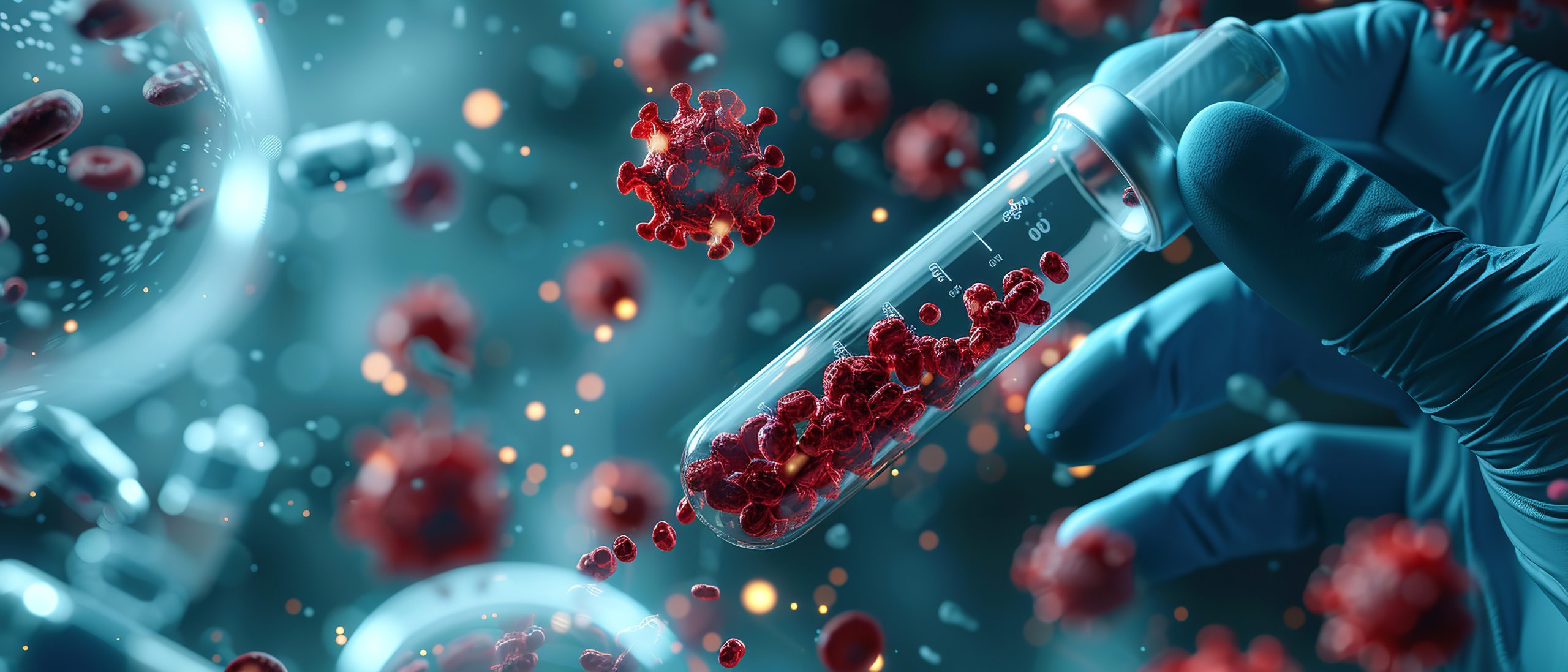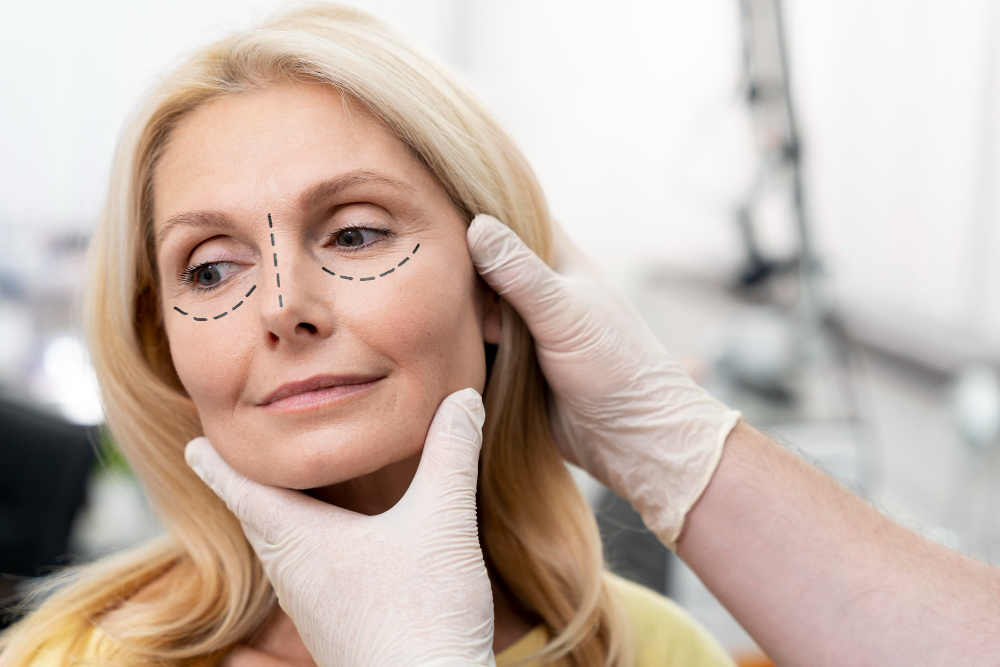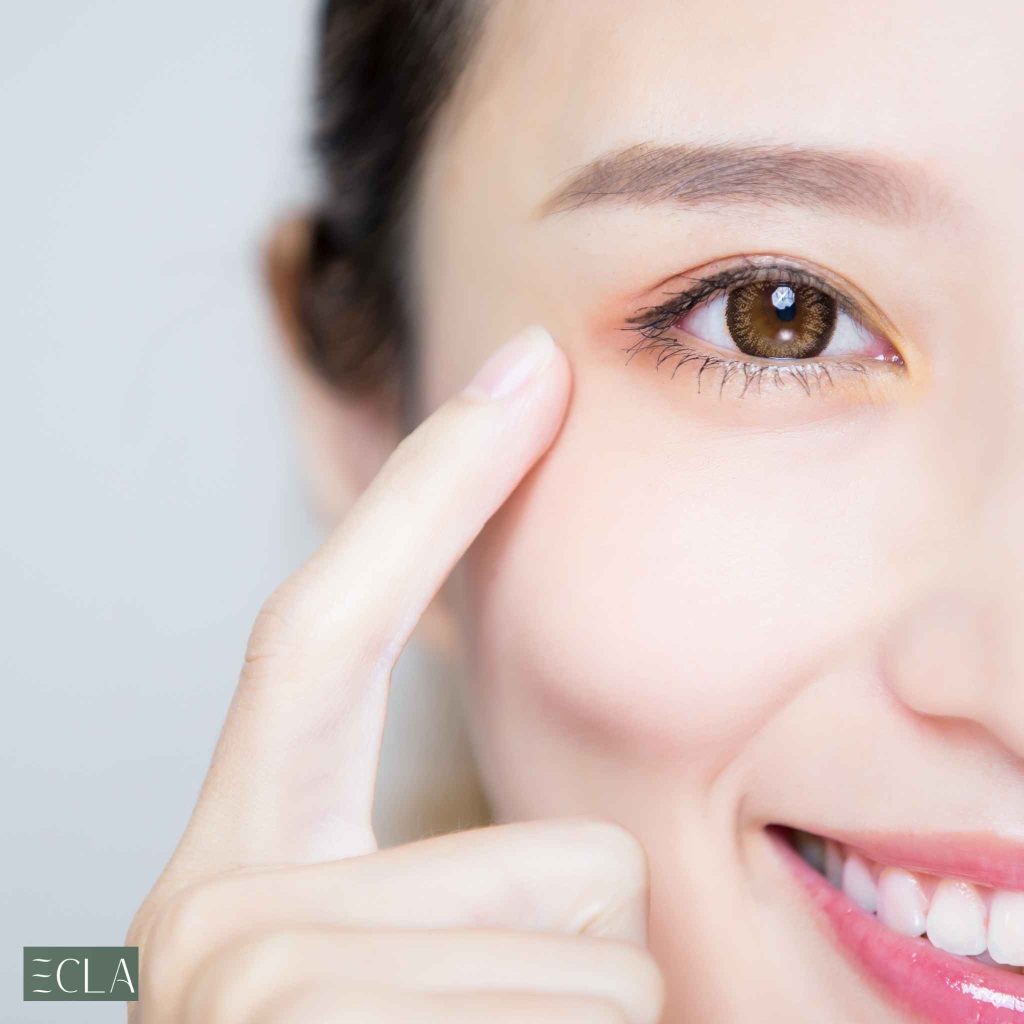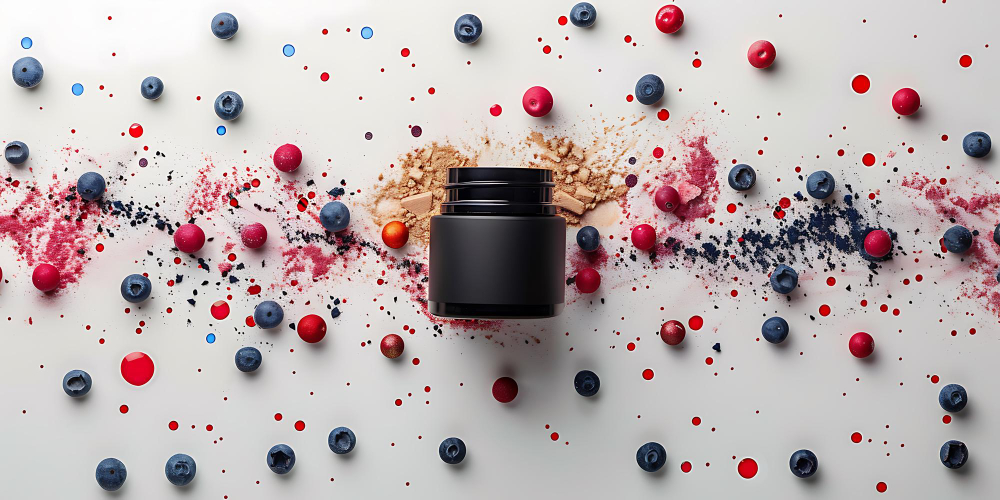
How a Post-Master’s Family Nurse Practitioner Program Can Advance Your Career
For nursing professionals who aspire to take on greater responsibilities and have a profound impact on patient care, pursuing a post-master’s Family Nurse Practitioner (FNP) program is a worthwhile investment. This advancement not only equips nurses with the skill set required for specialized practice but also opens doors to leadership roles and a broader scope of practice. Individuals seeking to enhance their credentials and expertise will find this pathway especially rewarding. If you’re contemplating the next step in your nursing career, considering a post-master’s FNP program online could be the catalyst for change. Below, we explore how such an educational pursuit can lead to career growth.
Exploring the Benefits of a Post-Master’s Family Nurse Practitioner Program for Career Growth
A post-master’s FNP program offers nurses higher earning potential and job security by refining clinical skills and theoretical knowledge. The program focuses on a family-centered approach to healthcare, preparing nurses to deliver comprehensive care to patients of all ages. Completion of this program signifies a commitment to excellence and often leads to higher positions in the healthcare field.
Graduates are recognized for their advanced practice status and are sought after by employers. Online programs allow nurses to balance work, life, and education, making advancement achievable without pausing their careers. Eligibility for certification and licensure as a family nurse practitioner enhances their professional profile and autonomy in decision-making.
Advancing Clinical Expertise with a Post-Master’s FNP Qualification
A post-master’s FNP program equips nurse practitioners with the necessary skills to navigate complex healthcare scenarios. This program emphasizes clinical reasoning, diagnostic skills, and evidence-based practice, enabling graduates to integrate research findings into patient care. FNPs gain proficiency in advanced medical technology, pharmacological principles, and managing chronic conditions, enabling them to lead in complex patient care situations.
The program also includes extensive clinical practicums, providing real-world experience in diverse healthcare settings. This hands-on training prepares nurses to operate autonomously upon graduation and respond adeptly to healthcare crises, ensuring they can contribute to public health and emergency response teams.
Strengthening Leadership Skills and Employment Opportunities for FNPs
A post-master’s FNP program focuses on leadership development, preparing nurses to become change agents in healthcare institutions. These programs often include modules on healthcare management, preparing them for supervisory or administrative roles. The employment landscape for FNPs is robust, with increased demand due to healthcare industry growth and a focus on preventive care.
Graduates often find themselves in leadership roles, overseeing teams or departments. The degree can also serve as a steppingstone for those seeking careers in academia or research, allowing FNPs to educate the next generation of nurses. Career opportunities have expanded beyond healthcare to business, educational organizations, and technology sectors.
The Impact of Specialized FNP Education on Patient Care Quality
Post-master’s FNP program online options equip nurses with advanced skills to deliver holistic and individualized care, improving patient outcomes. With training in chronic disease management, diagnostic procedures, and long-term treatment planning, FNPs play a critical role in addressing complex health needs while reducing hospital readmissions and healthcare costs.
These programs also emphasize quality improvement and preventive care. FNPs use patient data to refine interventions, stay updated on new treatments, and educate patients on lifestyle changes and health screenings. By promoting prevention and health awareness, they help build a healthier society.
Networking and Professional Development in Post-Master’s FNP Programs
Post-master’s FNP programs offer numerous networking opportunities, fostering connections with fellow nursing professionals, faculty, and healthcare thought leaders. These interactions can lead to collaborations, job opportunities, and mentorships, influencing one’s career trajectory. Professional development is emphasized through seminars, workshops, and conferences, providing FNPs with the latest insights into healthcare advancements.
Online learning platforms, such as virtual symposia and discussion forums, extend networking beyond geographical boundaries. The digital era also offers the advantage of online learning platforms, allowing FNPs to engage with experts worldwide. The continuous learning environment in these programs encourages continuous skill refinement, staying updated with medical innovations, and adopting best practices, ensuring a lifetime of growth and achievement.
Overall, a post-master’s Family Nurse Practitioner program offers invaluable opportunities for nurses seeking to elevate their clinical practice, attain leadership roles, and make a meaningful impact on the quality of patient care. By fostering a combination of advanced clinical acumen, leadership aptitude, and a culture of continuous improvement, FNPs are positioned to become pivotal healthcare providers in the ever-evolving medical landscape.

How to increase NAD+ Levels?
NAD+ is a critical component for each cell in the body and for overall health and physiological functions. However, NAD+ levels decline over time due to various factors, leading to undesirable consequences if not replenished. So, how can you increase NAD+ levels? Find out in this article.
What is NAD+ Level?
NAD+ (nicotinamide adenine dinucleotide) is an essential coenzyme that provides energy to cells. It also plays a crucial role in basic metabolic processes, ensuring the body functions effectively. The simplest and most effective way to supplement NAD+ is through its precursors, nicotinamide mononucleotide (NMN) and nicotinamide riboside (NR).
NAD+ levels measure the amount of NAD+ in the body. The ideal NAD+ concentration in mammalian cells (including humans) ranges from 200 to 500 μM but can vary from 10 to 1000 μM [1]. However, signs of aging gradually appear as NAD+ levels decline over time. Additionally, when the body is ill, NAD+ levels drop significantly.
Role of NAD+ in Human Body
NAD+ is indispensable for the body, offering several prominent benefits:
- Energy Production: Maintaining appropriate NAD+ levels ensures the body has enough energy to function throughout the day without fatigue.
- Health and Resilience: Stable NAD+ levels enhance overall health, boost immunity, and aid in repairing both external and internal DNA damage.
- Homeostasis: NAD+ helps maintain cellular homeostasis, ensuring stable and disorder-free bodily functions.
- Protection: Adequate NAD+ levels provide a robust defence mechanism due to their strong antibacterial and anti-inflammatory properties.
- Insulin Sensitivity: NAD+ improves insulin sensitivity, helping to prevent insulin resistance, a leading cause of diabetes.
How to Increase NAD+ Levels
Increasing NAD+ levels naturally is a goal for everyone. Here are some useful tips:
Exercise
Regular exercise for 60 minutes each day is one of the easiest ways to naturally increase NAD+ levels. When your cells are active, they stimulate more NAD+ production to provide timely energy. Additionally, regular physical activity improves overall health, effectively preventing minor illnesses. Besides, physical exercise helps maintain a healthy weight and enhances cardiovascular health, reducing the risk of chronic diseases such as heart disease and diabetes.
Limiting sun exposure
Frequent exposure to sunlight (UV rays) without adequate protection can accelerate aging. Continuous exposure to UV rays increases the risk of skin damage, requiring more NAD+ to repair the damage. As the demand for NAD+ exceeds its production capacity, levels decline significantly and become difficult to recover. Using sunscreen, wearing protective clothing, and seeking shade can help protect your skin and preserve NAD+ levels.
Seek the heat
Although excessive sunlight can be harmful, avoiding it entirely is not advisable. Moderate sun exposure, especially in the morning when UV rays are weaker, helps the body absorb vitamin D, strengthening bones and boosting immunity. Spending a short time sunbathing daily can also contribute to naturally increasing NAD+ levels. Enjoying the sun safely can benefit your well-being and support your body’s natural processes.
Dietary changes
Building a scientifically balanced diet is the most effective way to enhance health. Ensure you consume the four essential nutrient groups, proteins, carbohydrates, fats, and vitamins-minerals, while diversifying food sources within each group. Include foods beneficial for increasing NAD+ levels, such as milk, avocados, fish, peanuts, and whole-grain bread. Eating various nutrient-rich foods supports overall health and helps maintain optimal NAD+ levels.
NAD+ Supplements
Taking NAD+ supplements is a suitable way to naturally boost NAD+ levels. These supplements are carefully researched and formulated to enhance NAD+ levels effectively. Supplementing with NAD+ precursors, such as nicotinamide mononucleotide (NMN) or nicotinamide riboside (NR), eliminates the need for users to calculate daily dosages, as they follow the manufacturer’s recommended serving sizes.
By combining these methods, you can effectively increase your NAD+ levels, enhancing your energy, reducing the signs of aging, and promoting overall health. If considering NAD+ supplements, consult a healthcare professional for personalized advice and a safe usage plan.
If you’re unsure which NAD+ boosting product is good for your health, consider Vinatura Supplement 1000mg. This highly pure supplement contains only NAD, with no other ingredients. It is designed as a daily dosage capsule, making it easy to absorb and digest. Additionally, the product has been third-party tested and is manufactured at an FDA-approved facility, ensuring high safety and minimizing health risks.
What to Look for When Buying NAD+ Supplements
When choosing NAD+ supplements, consider the following criteria:
- Quality and Purity: Prioritize NAD+ supplements with the highest purity (ideally 100%), free from additives and allergens. This ensures the product is of high quality and maximally safe for users. Additionally, check whether the ingredients are carefully processed (look for third-party certification) and whether the manufacturing facility meets standards (FDA approval).
- Bioavailability: Opt for products containing easily absorbable NAD+ precursors. NMN (nicotinamide mononucleotide) and NR (nicotinamide riboside) are ideal NAD+ versions, as they are easily absorbed by the body and not wasted.
- Dosage: It is recommended to supplement 250 to 1,000 mg of NAD+ daily through dietary supplements. Ensure the supplement you choose can meet these requirements.
- Price: The price of NAD+ supplements on the market varies widely, from tens to hundreds of dollars. Choose a product that fits your budget and meets your personal needs.
- Customer Reviews: Read feedback from actual users to understand the supplement’s effectiveness and their level of satisfaction. Additionally, this helps you determine if the product is suitable for you based on experiences shared by users with similar conditions.
Conclusion
Hopefully, this article has provided insights into how to naturally increase NAD+ levels, ensure sufficient energy, reduce signs of aging, and prevent various health issues. If considering NAD+ supplements, consult a doctor for detailed advice and a safe usage plan.

Turmeric Vs. Curcumin: Can You Take Both of Them?
We can use turmeric and curcumin together. Turmeric and curcumin are often used interchangeably, but they are not entirely the same. In this article, we will explore the differences between the two, the benefits each one offers, and how combining them can provide health benefits for us.
What are Turmeric and Curcumin?
- Turmeric – a plant belonging to the ginger family, is widely known and used as a spice in Asia, especially in India, China, etc. It is often heard of and recognized for its role in coloring and flavoring curry dishes. Notably, turmeric is commonly known as an herb in traditional medicine.
- Curcumin is well-known for its strong anti-inflammatory and antioxidant effects. It helps reduce symptoms of chronic inflammation, such as arthritis and supports slowing down the aging process by reducing oxidative stress in the body.
- In an experiment on diabetic rats, the group that was fed a diet with curcumin supplements showed positive improvements. After 6 weeks, rats in the curcumin group maintained better antioxidant levels and significantly reduced inflammation markers like IL-1β, VEGF, and NF-kB (which usually increase with inflammation). Although curcumin didn’t significantly lower blood sugar levels, its effect on controlling inflammation markers and protecting cells was evident [1].
Common Benefits of Turmeric and Curcumin
- Turmeric offers many health benefits. One notable benefit of turmeric is its ability to prevent diabetes. This has been demonstrated through a study with mice. [2]. Moreover, it also supports digestive health, enhances immune function, etc. Because of these benefits, turmeric is not only a spice used in cooking but is also regarded as a common herb in medicine.
- As for curcumin, its most significant effect is its anti-inflammatory properties, skin beautification, etc. In particular, we are aware of curcumin’s effects on gastrointestinal-related diseases. Furthermore, it has an impact on the brain and memory. Therefore, this compound has been heavily exploited for the production of health-supporting supplements.
Turmeric Vs. Curcumin: How Do They Differ from Each Other?
As we have just explored above, both turmeric and curcumin offer many health benefits. However, to avoid confusion, we need to distinguish between them. So, how do turmeric and curcumin differ?
Benefits
- Turmeric and curcumin each have distinct benefits, even though curcumin is the main compound found in turmeric.
- Turmeric is known for its properties, as it contains many other beneficial compounds besides curcumin. The benefits of turmeric include its ability to reduce inflammation, support overall health, and promote digestive health, etc.
Side Effects
As for turmeric, it is considered safe since it comes from nature. However, caution should be exercised during use, as excessive consumption may lead to stomach pain.
Regarding curcumin, although its safety has been validated, some unwanted side effects have been recorded. In one study, 7 participants used doses ranging from 500 mg to 12,000 mg over 72 hours and experienced symptoms such as diarrhea, headaches, rashes, and yellow-colored stools. [4]. Additionally, another study showed that a participant who used between 0.45 g and 3.6 g of curcumin daily for 1 to 4 months reported feelings of nausea and diarrhea, etc. [5].
Turmeric Vs Curcumin: Which is Better to Choose?
When it comes to choosing between turmeric and curcumin, it depends on each person’s needs and usage goals. Turmeric, as a spice, contains many compounds and can be naturally ingested through food (it can be absorbed by being processed into meals and beverages). This method is suitable for those who do not prefer to take medications and whose symptoms are mild, only needing to supplement nutrients through dietary intake.
Curcumin, on the other hand, is more suitable for those looking to treat inflammation at higher doses. Curcumin will support your health better for chronic inflammatory conditions. Therefore, in this case, choosing high-dose curcumin supplement products would be more appropriate.
Can You Take Both Turmeric and Curcumin?
Of course, we can use both turmeric and curcumin together. Combining the two can provide optimal benefits for your health. So far, there have been no reported cases of adverse reactions between turmeric and curcumin. Using them together can enhance antioxidant and anti-inflammatory capabilities and provide more comprehensive health support. However, it is essential that when using them, you consult with a health professional regarding the dosage, and you should closely examine the ingredient list of products containing curcumin to ensure that you are not allergic to any of its components.
How to Take Turmeric and Curcumin Together?
There are many methods to use both together.
- First, you can incorporate turmeric powder into your daily diet, such as in smoothies, soups, curries, etc. Additionally, you can use a curcumin supplement (following the dosage instructions provided by the manufacturer) after meals.
- A more optimal method is to choose a supplement that contains both turmeric and curcumin. Currently, there are several supplements available on the market that can meet this need, such as Turmeric Curcumin with Black Pepper, etc. This method will be very suitable for busy individuals who do not have time to prepare too many things, such as cooking.
Where to Buy Turmeric and Curcumin Supplements?
When discussing where to buy reputable turmeric and curcumin supplements, we need to choose truly trusted brands. You might consider Vinatura Store, which provides high-quality products that optimize health benefits.
One standout product line from Vinatura Supplements is the Turmeric Curcumin with Black Pepper product. This supplement combines turmeric and curcumin, significantly enhancing the absorption of curcumin in the body. This combination can provide powerful anti-inflammatory and antioxidant effects, making it an excellent and reliable choice for everyone. Additionally, this product contains black pepper, which helps increase the bioavailability of curcumin. This is the perfect choice.
Conclusion
Through this article, we can see that both turmeric and curcumin offer significant health benefits, but they still have their distinct differences. Using both is entirely possible, but it is advisable to consult with a specialist and have appropriate methods of use to avoid unwanted side effects. Finally, when choosing supplement products, it is essential to select those from reputable brands to avoid health risks.

Diving into Chronic Lymphocytic Leukemia (CLL) & Treatment
Do you want to know what Chronic Lymphocytic Leukemia, known as CLL is? Well, CLL is considered the most common form of leukemia that mostly occurs in adults. It is considered a type of cancer that highly affects the lymphocytes or white blood cells. It mainly accumulates in the bone marrow or blood, leading to different symptoms.
If we could say that Chronic Lymphocytic Leukemia is a slow-growing cancer then, it wouldn’t be wrong. It slowly and gradually affects the whole immune system of the human body and causes a lot of complications. In the article below, we will discuss everything about CLL. We will also target how to treat chronic lymphocytic leukemia and different common treatments that can be considered for this condition.
What is Chronic Lymphocytic Leukemia?
Chronic Lymphocytic Leukemia or a CLL, is a type of leukemia that mostly occurs due to the abnormal accumulation of lymphocytes in the blood. The accumulation of lymphocytes in blood, bone marrow, or lymph nodes led up to the condition known as Chronic Lymphocytic Leukemia.
This condition of accumulation of cells is a slow-growing disease and does not cause any major symptoms for years. However, it is important to know that at the progression stages the disease can cause many complications such as anemia, bleeding, or infections.
What Are The Types of Chronic Lymphocytic Leukemia?
There are different types of chronic lymphocytic leukemia. It is mainly divided into two main types:
- The very first is chronic lymphocytic leukemia, also known as CLL. It is the first and most common type of CLL and occurs by the gradual accumulation of mature B lymphocytes in the blood or bone marrow.
- Another type is T cell PLL. It mainly affects the T lymphocyte nodes, which is responsible for the white blood cell coordination with the immune system response against infections or abnormal cells. Moreover, T cell PLL mostly show symptoms quickly as compared with people with B cell CLL.
What Are The Causes of Chronic Lymphocytic Leukemia?
According to research, it usually occurs in individuals who have gone through the chromosomal or Gene mutation in their lifetime. Additionally, there are different factors that also contribute a lot to the development of Chronic Lymphocytic leukemia. Below, we have mentioned certain factors:
- The very first is Age. On average, adults over the age of 60, or nearly 70, are diagnosed with Chronic Lymphocytic Leukemia.
- Family history also contributes a lot. The individuals who have a close family history of Chronic Lymphocytic Leukemia Development in their biological parents, siblings, or children are more likely to develop CLL.
- Sexuality also contributes. According to research, men are more likely to develop CLL in comparison to women at birth.
- The exposure to Agent Orange also led to the development of Chronic Lymphocytic Leukemia. Agent Orange is a chemical that was previously used, especially during the Vietnam War.
What Are The Symptoms of Chronic Lymphocytic Leukemia?
There are different symptoms that you can find at the progression stages. It is important to know that CLL often does not cause any major symptoms in the early initial phases. However, it shows up as the disease progresses into the oldest stage. It might take months before showing any symptoms.
However, there are some common symptoms that you should know. Below, we have mentioned that all.
- Fatigue
- Weight loss
- Swollen lymph nodes
- Frequent infections
- Easy bleeding or bruising
- Night sweats
- Fever
How to Diagnose Chronic Lymphocytic Leukemia?
- The diagnosis procedure of CLL is quite simple. It typically involves a physical examination, blood test, or bone marrow biopsy. By conducting the blood test, you can help identify the abnormality in the lymphocyte B. Additionally, you can also detect the stage of the disease.
- Moreover, conducting the blood test will also help you get the complete blood count of your RBC and WBC. This helps you understand how much haemoglobin your red cells have as it holds great importance.
- You can also consider a pathologist who can help you examine your blood through microscopic activity.
- Bone marrow biopsy is another way to diagnose, it is mainly performed to consider and confirm the extent of the disease
- Last but not least is the genetic test. These genetic tests include fluorescent in situ hybridization, often known as FISH. It plays a crucial role and helps in understanding the chromosomal and gene mutation activity.
What Chronic Lymphocytic Leukemia Treatments are Available?
Treatment for Chronic Lymphocytic disease completely varies and depends on the type and the stage of the disease the patient is standing on. However, it is important to know that in some cases, the only way to treat Chronic Lymphocytic Leukemia is to observe and keep the individual under the monitoring.
However, if your disease has progressed then the treatment may become the necessary expectation yet there are different common treatment options available nowadays. Below we have mentioned all the common treatment options.
Common Treatment Options for CLL Include
- The very first is observation and monitoring. Regular monitoring and blood tests during physical examination will help a lot in keeping the disease under control and reducing the risk of progression.
- Chemotherapy is another major option that needs to be considered. Chemotherapy uses the drugs that help kill the cancer cells in the blood.
- Target therapy is also a popular treatment used for Chronic Lymphocytic leukemia. It mainly targets the specific molecules that are most involved in the survival of cancer cells. There are many popular target therapy drugs available in the market. However, the most common and effective ones are ibrutinib and acalabrutinib.
- Immunotherapy can also be considered to treat Chronic Lymphocytic Leukemia, protecting your immune system and assisting your system in fighting the cancer cells. Thus, Immunotherapy is like a simulating therapy.
- Last but not least, treatment that you can consider for Chronic Lymphocytic Leukemia is stem cell transplant. This includes the replacement of the damaged bone marrow with healthy stem cells.
Ibrutinib and Acalabrutinib The Target Therapy to Treat Chronic Lymphocytic Leukemia
There are the two major target therapy drugs that are considered as an approved treatment for CLL. These drug target therapy includes Ibrutinib and Acalabrutinib. Ibrutinib known as Imbruvica & Acalabrutinib known as Calquence. However, Calquence cost is more budget friendly if we compare to Ibrutinib. These two drug therapies respectively are considered highly effective treatments as they work by blocking a protein called Bruton’s tyrosine kinase of BTK. The blockage works greatly as it involves the survival of CLL cell growth in your body.
Well, Calquence may be the best option for CLL patients who are struggling with the high cost of Ibrutinib. However, the price of ibrutinib and calquence depends widely on several factors. These factors vary from insurance coverage to pharmacy and location to the brand you consider. Yet there are nowadays different generic versions of medicines available in the market as well.
These generic medicines are highly effective and are also known as affordable solutions. However, it is important to remember that before taking any medicine always consult your health professional or consultant.
Conclusion
Overall, we have discussed all the basic details about Chronic Lymphocytic Leukemia and how Chronic Lymphocytic Leukemia is treated, the different types of Chronic Lymphocytic Leukemia, and the symptoms that can be caused due to this disease. However, there are different effective solutions available to treat Chronic Lymphocytic. So, if you are also one of those who have been diagnosed, then there is no need to worry about it as now a professional treatment is available. All you need is to consult your healthcare provider.

What are the Symptoms of NAD+ Deficiency?
NAD+ (Nicotinamide Adenine Dinucleotide) is one of the most critical molecules in the body, playing a role in numerous biological processes essential for health.
NAD+ is known as a necessary coenzyme in crucial metabolic processes, including cellular energy production through the Krebs cycle and cellular respiration. It plays a key role in maintaining cellular health and regulating enzyme activity. High NAD+ levels help improve overall health, protect the body from premature aging, and reduce the risk of related diseases.
However, when NAD+ levels decline, cells lose their ability to repair and regenerate. This can lead to serious consequences such as reduced metabolic efficiency and increased risk of age-related diseases like Alzheimer’s, diabetes, and cardiovascular conditions.
In this article, we will explore the causes of NAD+ deficiency, common symptoms, and how to improve NAD+ levels to maintain optimal health.
Why Does NAD+ Deficiency Occur?
There are several reasons for NAD+ deficiency in the body. The first is natural aging. Over time, the body’s production of NAD+ decreases, leading to weakened energy metabolism and reduced cellular repair capacity. This is why older individuals often experience fatigue and memory decline.

Secondly, an inadequate diet lacking in essential nutrients, especially foods rich in NAD+ precursors, can lead to NAD+ deficiency. Foods like lean meats, fish, eggs, and leafy greens are important sources of NAD+ precursors necessary for the body’s NAD+ synthesis.
Therefore, it’s essential to include these types of foods in your diet to ensure sufficient NAD+ levels.
Additionally, prolonged stress, environmental pollution, and unhealthy lifestyle choices—such as excessive alcohol and tobacco consumption—can significantly deplete NAD+ levels. These factors trigger oxidative processes in the body, reducing its ability to maintain balanced NAD+ levels.
Symptoms of NAD+ Deficiency
Fatigue and Weakness
NAD+ is a crucial component of the Krebs cycle, where it plays a key role in converting nutrients from food into energy in the form of ATP (Adenosine Triphosphate). When NAD+ levels drop in the body, energy production is severely impacted.
As a result, NAD+ deficiency often leads to prolonged fatigue and weakness, even if you’ve had sufficient sleep or haven’t engaged in physically demanding activities. This is because the cells are not generating enough energy to meet basic needs, leaving you feeling exhausted and drained without an obvious cause.
Additionally, low NAD+ levels can affect recovery after exercise or physical activity, leading to prolonged fatigue and a slower ability to regain strength after daily tasks.
Cognitive Decline
NAD+ is not only essential for physical health but also plays a significant role in brain function. When NAD+ levels decrease, neural signaling processes are disrupted, leading to issues with memory retention, concentration, and information processing.
Notably, research has shown that NAD+ deficiency may increase the risk of neurodegenerative diseases like Alzheimer’s and Parkinson’s. Mental health problems, such as anxiety and depression, can also be linked to low NAD+ levels, as the nervous system struggles to function efficiently.
Cardiovascular Health Issues
NAD+ plays a critical role in supporting normal blood pressure by improving the health of endothelial cells. When NAD+ levels decline, blood vessels become weaker, less elastic, and more prone to damage.
NAD+ deficiency can lead to high blood pressure, atherosclerosis, and poor blood circulation. These issues may not be noticeable at first, but over time, the risk of cardiovascular diseases, stroke, and heart attack increases. People with low NAD+ levels may experience shortness of breath during physical activity, chest pain, or a feeling of heaviness in the heart.
A lack of NAD+ also reduces the heart’s ability to recover from damage, increasing the risk of heart disease. When the body cannot regenerate enough NAD+ to repair heart cells, the heart’s overall efficiency declines, weakening the entire cardiovascular system.
Increased Insulin Sensitivity
NAD+ is also involved in biological processes that regulate insulin function—the hormone responsible for managing blood sugar levels. When NAD+ levels decrease, these processes become disrupted, leading to increased insulin sensitivity. The body becomes less efficient at using glucose, setting the stage for insulin resistance—a precursor to type 2 diabetes.
Individuals with NAD+ deficiency may experience symptoms like elevated blood sugar, constant hunger, fatigue after meals, and uncontrolled weight gain.
These are the early signs of insulin resistance and diabetes. If left untreated, these conditions can lead to serious complications such as kidney damage, nerve damage, and vision loss. Low NAD+ levels also impair the metabolism of fats and sugars, causing the body to accumulate excess fat, especially around the abdomen.
Skin Aging
NAD+ also plays a role in maintaining youthful and elastic skin. It is involved in the skin cell regeneration process. When NAD+ levels decrease, the skin’s ability to repair itself diminishes, leading to rapid aging.
Signs of this include dry, tight skin that flakes easily and the appearance of more wrinkles due to weakened collagen production. As NAD+ decreases, the skin loses its ability to retain moisture, resulting in visibly less smooth and supple skin.
The skin also becomes more prone to damage and irritation from external factors like UV rays, pollution, and chemicals present in the environment.
Ways to Improve NAD+ Levels in the Body
Incorporate NAD+ Supplements
NAD+ supplements such as nicotinamide riboside (NR) and nicotinamide mononucleotide (NMN) have been shown by experts to effectively and quickly boost NAD+ levels in the body.
NR and NMN are NAD+ precursors that, once absorbed by the body, help stimulate NAD+ synthesis, improving cellular metabolism and energy functions.
Before taking NAD+ supplements, it’s important to consult a doctor to ensure safety and effectiveness. While these supplements have proven benefits, the dosage and product quality are crucial to ensuring positive effects without harming the body.
Additionally, you may consider trying a Vinatura NAD supplement, produced in the USA. VINATURA is known for providing one of the best NAD+ supplements available today, effectively and safely boosting NAD+ levels to promote a healthy lifestyle.

In addition, you can explore top-rated NAD+ supplements available on the market, including:
- Tru Niagen
- Elysium Basis
- NADGold by Quicksilver Scientific
- Thorne Research ResveraCel
- HPN NAD3
Adopt a Nutritious Diet
One of the safest and most effective natural ways to boost NAD+ levels is by consuming foods rich in NAD+ precursors. These precursors include niacin (vitamin B3), nicotinamide, and tryptophan, which are essential for the body’s synthesis of NAD+. Food sources rich in NAD+ precursors include:
- Lean meats: Beef, chicken, and pork are excellent sources of niacin, a key precursor in NAD+ production.
- Fish and seafood: Salmon, mackerel, and other omega-3-rich seafood are not only heart-healthy but also help increase NAD+ levels.
- Eggs: Eggs are high in tryptophan, an amino acid essential for the body to convert into NAD+.
- Leafy green vegetables: Spinach, kale, and broccoli contain compounds that support the NAD+ metabolism process.
- Nuts and whole grains: Almonds, chia seeds, and whole grains are not only rich in fiber but also contain niacin, which helps boost NAD+ production.
Maintaining a balanced, fiber-rich, and nutrient-dense diet allows the body to absorb the necessary compounds to synthesize NAD+. Additionally, supplements like nicotinamide riboside (NR) and nicotinamide mononucleotide (NMN) have been clinically proven to enhance NAD+ levels, so consider adding them to your routine.
Engage in Regular Physical Activity
In addition to consuming nutrient-rich foods, regular exercise has been proven to be one of the most effective natural ways to boost NAD+ levels.
When you exercise, your body needs to produce more energy to sustain activity, which stimulates an increase in NAD+ production in cells. Physical activity also increases the amount of sirtuins, a group of proteins that regulate longevity-related processes and the utilization of NAD+.
Exercises beneficial for increasing NAD+ levels include:
- Cardio exercises
- Weight training and strength exercises
- Yoga and Pilates

Maintaining a regular exercise routine for at least 30 minutes a day, 5 days a week, will help improve NAD+ levels over time. In addition to enhancing NAD+, exercise also supports mental health, improves sleep, and slows down the aging process. All of these factors are closely related to NAD+ levels in the body.
Prioritize Quality Sleep
To maintain NAD+ levels in the body, achieving quality sleep is extremely important. During sleep, the body carries out various cell regeneration functions, including the re-synthesis of NAD+. Lack of sleep or poor-quality sleep reduces the body’s ability to regenerate NAD+ and affects energy metabolism.
Healthy Sleep Habits to Boost NAD+ Levels:
- Get enough sleep: The body requires 7-9 hours of sleep each night to recover and ensure metabolic processes function effectively.
- Avoid using electronic devices before bed: Blue light from phones and computers can disrupt melatonin production, a hormone that regulates sleep.
- Create a quiet, comfortable, and cool sleeping environment: A conducive sleep setting promotes deep, restorative sleep.
Manage Stress Effectively
Chronic stress doesn’t just lead to mental health issues but also negatively impacts physical health. Stress increases the production of free radicals, which consume more NAD+ to repair cell damage, leading to a rapid decline in NAD+ levels.
Stress Management Techniques:
- Meditation: Meditation helps reduce stress and enhances the body’s self-regulation by activating the parasympathetic nervous system, which lowers cortisol (the stress hormone) and protects NAD+ levels.
- Yoga: Yoga not only stretches muscles but also relaxes the mind, balances the nervous system, regulates hormones, and reduces stress levels.
- Deep breathing exercises: Controlled deep breathing relaxes the body and alleviates stress immediately. When stress decreases, the body requires less NAD+ to cope with cell damage caused by stress.
In addition to these techniques, taking 10-15 minutes daily to unwind can significantly reduce stress and improve NAD+ regeneration.
Limit Alcohol and Tobacco Use
Stimulants such as alcohol and tobacco cause significant cell damage and deplete NAD+ levels in the body. Alcohol damages the liver and decreases the ability to metabolize NAD+. Tobacco contains harmful toxins that trigger inflammation and reduce cell regeneration, thereby lowering the necessary NAD+ for recovery.
Reducing harmful substances like alcohol and tobacco not only boosts NAD+ levels but also lowers the risk of chronic diseases like diabetes, heart disease, and cancer. Maintaining a healthy lifestyle will help the body utilize energy more effectively and regenerate NAD+ optimally.
How to Diagnose NAD+ Deficiency
Check NAD+ Levels in the Body
With today’s advanced technology, checking NAD+ levels can be done through blood tests and specialized biochemical analysis methods. For individuals experiencing symptoms such as fatigue, cognitive decline, or cardiovascular issues, checking NAD+ levels is essential to accurately identify the cause.
Consult a Doctor and Schedule Regular Checkups
If you’re concerned about your NAD+ levels, it’s recommended to visit a healthcare facility to consult with a specialist. Regular checkups and tests can help detect NAD+ deficiency early and guide you towards suitable treatment options.
Conclusion
NAD+ deficiency can lead to serious health issues, including fatigue, memory loss, cardiovascular diseases, and premature aging. Early recognition of symptoms and taking measures to improve NAD+ levels can help you maintain long-term health and enhance your quality of life.
Always pay attention to your diet, exercise, sleep, and stress management to maintain stable NAD+ levels in the body. Thank you for reading this article! If you found it helpful, feel free to share it with your friends and family for their benefit!

Top 5 Gentle Eye Exercises for Blepharoplasty Recovery in Dubai
One of the most popular procedures at Ecla is blepharoplasty, or eyelid surgery, which tends to get rid of excess skin and fat around the eyes for a refreshed look. Along with aesthetic benefits, there are some psychological benefits of blepharoplasty in Dubai, such as boosting confidence and improving self-esteem by enhancing one’s appearance. After surgery, it is important to take good care of the eyes, and some eye exercises will help a lot in this process. Gentle movements prevent swelling, promote circulation, and help make sure that you do not experience issues like stiffness or muscle atrophy later on. Below, we explore five essential eye exercises to help boost recovery after blepharoplasty in Dubai.
Blinking Exercises
Closing and blinking your eyes may actually become difficult for some patients after undergoing blepharoplasty, as this could just be due to swelling and tightening of the skin. Gently blinking exercises can help to restore normal eye function and prevent dryness.
How to Perform
- Just sit and let your face muscles loosen.
- Close your eyes slowly, as if going to bed. Hold for one second.
- Slowly widen your eyes, opening as much to make the upper and lower eyelids move easily.
- Repeat this process for the next 10-15 times.
Benefits:
This eye blinking exercise helps to keep moist, and maintaining the moisture helps avoid dryness for patients post-blepharoplasty. They also enhance blood circulation to the area of the eyelid, which helps it recover quicker. This is a light movement exercise helping to activate muscle around and not burden a surgery point.
Palming Technique
Palming is a relaxation exercise that helps to reduce eye strain and heal by releasing the tension around our eyes. It helps to relax the patients after the blepharoplasty procedure, and it promotes circulation around the eyes without causing any pressure.
How to Perform:
- Comfortably sit with eyes closed.
- This will likely not be enough; rub your hands together quickly to generate some heat.
- Place the palms of your hand over your closed eyes without putting pressure on them, and feel the heat soothing in.
- Regularly practice deep breathing and relaxation techniques throughout your day for 5 to 10 minutes.
Benefits:
A great way to enhance blood flow and aid healing after blepharoplasty is through palming. Palming improves post-surgery comfort and reduces strain as it calms the nerves to promote relaxation. It is especially great for patients who are early in recovery and more active movements may not be possible yet.
Eye-rolling exercises
Gentle exercises of eye rolling after blepharoplasty can entail improving the movement and flexibility of muscles within the eyes. These movements lay the foundation for keeping your joints free from being stiff and to come back into full moving-on-track again.
How to Perform:
- Be relaxed, sit comfortably, and look straight forward.
- Slowly start rotating your eyes in clockwise direction and then in anticlockwise direction.
- Repeat this exercise 5 to 10 times in each direction, and also take care not to overwork your eyes.
Benefits:
The eye rolling exercise helps the flexibility in the eye muscles, and it relaxes, which is good to achieve after undergoing blepharoplasty. This exercise increases lymphatic drainage on the eye area, which can lessen any puffiness and help with swelling. It also helps in developing the muscles that hold your eyelids up; therefore, it fastens recovery and makes it look more natural.
Focus Shifting Exercise
Prescribed focus-shifting exercises to ensure that the vision and muscle control are clear, this gets hampering after blepharoplasty. This is one of the exercises that provides focus between near and far-sighted objects to train your eye muscles, but in a safe way so that they do not get overworked.
How to Perform:
- Hold your finger or a small object, which should be around 6 inches away from your face.
- Look at the object for 5 seconds and then quickly look away at a distant target (a wall or an object on the other side of your room) for another 5 seconds.
- Repeat the process of focusing near and far for 10 times.
Benefits:
Focus-shifting exercises that improve visual acuity and coordination can be temporarily affected by swelling, which occurs often after blepharoplasty. This practice also enhances blood flow to the eyes and surrounding tissues, which helps them, recover faster. It’s an effective way to keep your eye muscles active without applying force to incisions made with surgery.
Light Eye Massage
The area under the eyes will show less swelling and heal faster with increased blood flow by performing a light, gentle massage around this region. This exercise needs to be done with great care so as not to put any pressure on the surgical field directly. Check with your surgeon in the Ecla Clinic in Dubai before attempting this exercise.

How to Perform:
- Not all fingers are equal; the ring finger produces less pressure by nature.
- Begin at the top corner of your nose and slowly tap around both eyes using the circular method outwards along with all cheekbones.
- Do this gentle tapping for 1-2 minutes, making sure no tap is directly on the incision site.
- You may also use a cold compress to help reduce any swelling after the massage.
Benefits:
A light massage can ease the eye-related stress that comes after the surgery, including reducing swelling and improving lymphatic drainage. This increases blood flow and provides more oxygen and nutrients to the healing tissue. Caution should be observed to ensure that the massage is light and does not disturb the surgical site.
Tips for Maximizing Recovery after Blepharoplasty in Dubai
In addition to performing these eye exercises, here are some guidelines to ensure a smoother recovery after your blepharoplasty in Dubai:
- Follow Post-Operative Care Instructions: Your team at Ecla Clinic will give you thorough aftercare advice to help manage swelling, alleviate discomfort, and apply cold compresses or use eye drops when suitable. By truly adhering to these guidelines, you can accelerate the healing process.
- Avoid Straining Your Eyes: Don’t overwork your eyes by reading, watching TV, or using screens for sustained periods in the first few days after surgery. This can delay the healing process or aggravate it further.
- Stay Hydrated and Maintain a Healthy Diet: The importance of adequate nutrition that includes all the vitamins, minerals, etc. is re-emphasized in recovery. Eating foods full of vitamins and antioxidants, such as leafy greens or fruits, will help your tissues heal better while lowering inflammation.
- Take Plenty of Rest: After blepharoplasty, rest is key to healing and one of the most important things you can do. Sleep with your head elevated; this will help prevent swelling and decrease pressure against the eyes.
Conclusion
Blepharoplasty in Dubai, particularly at top clinics such as Ecla Clinic, revolutionizes the aesthetic look of men and women who wish to look young. Doing gentle exercises for the eyes like blinking, palming, eye rolling, and focus shifting, along with light massage, further assists in the healing so that recovery is smooth and without any hitches. Created to help strengthen the surrounding muscles, reduce inflammation, and improve circulation without stressing your recent operation.

Best Rhinoplasty Surgeons in Dubai for Nasal Tip Correction
Nose surgery, or rhinoplasty, is one of the most famous cosmetic procedures in the world. We at Ecla Clinic in Dubai are dedicated to providing all of our patients with a bespoke, high-quality experience when they decide on treatment and undergo nasal tip rhinoplasty. When it comes to looking for nasal tip Rhinoplasty in Dubai, you need the expertise of a surgeon who specializes in this specific procedure. We have highly skilled rhinoplasty specialists who can perform nasal tip correction.
In this article, we will explain everything you need to know about nasal tip rhinoplasty, including how it enhances the shape and size of your nose, what the procedure involves, and what sets us apart.
Understanding Nasal Tip Rhinoplasty in Dubai
Nasal tip rhinoplasty, as a special form of rhinoplasty, is limited to changing the shape of just the nasal tip, so it has no effect on any other part like the nasal bridge or anything else. This works well for patients whose nasal structure is looking fine overall, but they would like to tweak the tip shape, projection, or rotation.
Here are some common reasons patients go for nasal tip rhinoplasty, including:
- Bulbous Tip: A type of nasal tip that is larger, widest, or more round than usual.
- Droopy tip: A nasal tip that points down, sometimes called “hooked” nose.
- Nasal Tip Asymmetry: Nasal tip asymmetry refers to when the tip of the nose is uneven, impacting upon balance with the rest of the face.
- Over-Projection: The nose comes too far away from the face towards its tip.
In comparison to a full rhinoplasty, nasal tip surgery is much less invasive, which generally means shorter recovery times and fewer risks. This surgery, however, is all about precision, and it needs to be done by an experienced surgeon who understands the intricacies of nasal anatomy as well as facial aesthetics.
The Nasal Tip Rhinoplasty Procedure at Ecla Clinic
Step 1: Initial Consultation:
This highly personal process to achieving a slender nasal tip all starts with an in-depth consultation at our clinic. During this session, the surgeon will assess your nose structure and discuss your desired outcomes. They will also explain what can or cannot be done in order to accomplish these goals. Aside from that, you will be able to see before and after photos of former nasal tip rhinoplasty patients, which will help you have a visual perception of what results might appear like.
Step 2: Surgical Planning:
Once the goals are clarified, our surgeons develop a customized surgical plan. This part of the process involves picking a method (open or closed rhinoplasty), deciding what needs to be done, and making sure that your expectations match with realistic results.
Step 3: The Surgery
- Duration: Nasal tip rhinoplasty will usually take 1 to 2 hours.
- Anesthesia: The procedure is usually carried out under local anesthesia with sedation or general anesthesia to ensure patient comfort throughout.
- Incisions: Closed rhinoplasty makes an incision inside the nostrils so there are no other scars seen. In open rhinoplasty, a minor incision is made at the base of the columella (the tissue between your nostrils). Any open space allows it to be simpler to visualize and manipulate nasal structures, so that better precision can easily be achieved.
- Cartilage reshaping: The surgeon controls the size and shape of the cartilage to define an improved tip. This may be done to decrease, increase, or refine the tip to suit their aesthetic aspirations.
- Closing incisions: After shaping the nose, the surgeon closes the incisions and places a splint on the nose to support it during healing.
Step 4: Recovery
Patients receive specific aftercare instructions to aid in proper healing following surgery. There is a lot of swelling and sometimes bruising in the first week, but these also will subside some as your nose heals. Most patients can go back to light activity in a week or two, but the final cosmetic appearance may not be apparent until all swelling is gone after few months.
Benefits of Nasal Tip Rhinoplasty in Dubai
Benefits of rhinoplasty in Dubai are for those who want to improve facial harmony and self-assurance. Here are a few key benefits of nasal tip rhinoplasty:
1. Improved Facial Harmony: Aneffective nasal tip can go a long way in creating balance and beauty between the nose, mouth, eyes, etc. If worked carefully, surgeons are able to make a big aesthetic improvement by making only minor changes with nasal tip rhinoplasty.
2. Increased self-confidence: Nose shape and size can lead to low self-esteem for many people. Fixing the imperfections in your tip and indeed highlighting it with a new nose shape that fits naturally to your face can give you confidence.
3. Minimal Scarring and Faster Recovery: Recovery time for nasal tip rhinoplasty is shorter than that of full rhinoplasty, and scarring will disappear to imperceptible levels in the closed technique. Usually, patients can go back to normal life within a couple of weeks.
4. Long-Lasting Results: Nasal tip rhinoplasty provides great long-lasting results if done by expert surgeons and has a very optimum natural change; it lasts for a long time with personalized operations performed by our clinic.
Why Choose Ecla Clinic For Nasal Tip Rhinoplasty in Dubai?
1. Highly skilled surgeons: We provide access to leading rhinoplasty surgeons in Dubai, who specializes in nasal tip correction. Our experts possess a deep understanding of nasal anatomy and employ techniques that deliver natural-looking results. Through the meticulous techniques and customized treatment process, they help patients achieve their aesthetic goals.
2. Minimally Invasive and Advanced Methodologies: Our doctors may use open rhinoplasty to maximize visibility or closed rhinoplasty if you have other concerns, all while keeping the smallest scars possible. This procedure makes the nose tip look better and still functions. We aim to achieve natural harmony between the nasal tip and one’s facial features, maximizing balance and symmetry.
3. Personalized Consultation and Planning: At our clinic, we believe in patient-centered care and that every rhinoplasty surgery should be unique to the individual. In this consultation, our surgeons examine the patient’s facial structure, skin thickness, and cartilage strength. We believe that this concept is crucial in formulating a surgical plan for satisfying the patient and achieving his objectives.
4. Proven Track Record and Patient Satisfaction: Our clinic is well-known for what we are able to achieve in nasal tip rhinoplasty. Our patients often experience a new level of self-assurance after their surgery, which is achieved through the consistent and gentle improvements to their facial structure. The trust our surgeons hold, as reflected through positive reviews and testimonials or from word-of-mouth referrals.
Conclusion
Get the best nasal tip rhinoplasty in Dubai only at our clinic. With the added benefit of many years of experience in this field, our surgeons succeed at delivering results that not only improve your appearance but indeed do wonders to boost high self-esteem levels as well! From nasal tip refinement to surgery that offers patients more drastic results, we ensure your expectations are matched with superb cosmetic outcomes.

The Future of Onsite Healthcare: 7 Key Trends and Innovations for a Healthier Workforce
Workplace injuries and health issues are a huge problem for businesses in various industries, with almost $3 trillion lost annually due to downtime, workers’ compensation claims, and reduced productivity.
To alleviate the problem, more and more organizations turn to onsite healthcare as it offers immediate medical support and proactive health management right at the workplace. However, with time, the needs of the workforce have changed, and so too has the face of onsite healthcare.
In this blog post, we’ll explore some of the most important trends and innovations that will shape the future of onsite healthcare, as well as how these can benefit employers and workers alike.
H2: Why is Onsite Healthcare so Important?
From the physical demands of manual labor to the mental stress of high-pressure corporate jobs, there are numerous health issues employees encounter in the workplace, including:
- Workplace injuries
- Chronic conditions such as musculoskeletal disorders
- Mental health issues like anxiety and depression
As more companies recognize the benefits of having immediate access to medical care, the demand for onsite healthcare is rising.
This service helps employers address health concerns promptly, reduce downtime, and prevent minor issues from escalating. It also gives you peace of mind that employees remain healthy and productive, making it a win-win for everyone.
H2: Key Trends and Innovations Transforming Onsite Healthcare
Here are the seven trends and innovations that are actively transforming the onsite healthcare field:
1. Telemedicine Integration
Thanks to telemedicine, employees can reach out to healthcare providers via video calls, chat, or phone consultations. This is great for companies with remote or dispersed workforces where onsite care might not be easily available.
With access to timely consultations, diagnoses, and even prescriptions right at their fingertips, employees no longer need to pay in-person visits. This saves lots of valuable time and ensures that workers receive the attention they require wherever they are.
2. AI and Predictive Analytics
AI can detect trends and forecast possible health hazards by examining vast databases, which enables proactive interventions.
Predictive analytics, for instance, can estimate the risk of workplace injuries based on an employee’s job role, work environment, and health data. It also enables you to put in place specialized health programs and safety measures, which lowers the chance of accidents and raises workplace safety standards overall.
3. Mental Health Support
The demand for mental health support has increased in the post-pandemic period as more employees recognize that mental well-being helps them reduce stress and anxiety.
Companies are integrating mental health support into their onsite programs, offering services such as counseling, stress management workshops, and mental health screenings. In turn, this leads to a more supportive and productive work environment.
4. Wearable Technology
Employee health data (such as vital signs, physical activity, and stress levels) can be monitored in real time thanks to wearable activity trackers and smartwatches.
This data can be used to provide personalized health insights, alert employees to potential health issues, and enable early intervention. For example, wearables can identify exhaustion or dehydration and notify workers to take a break or drink more fluids before symptoms appear.
5. Mobile Health Units
Mobile health units are like clinics on wheels – they are equipped with the needed technology and manned by medical personnel. Their aim is to offer easy access to healthcare as they are located right on the job site.
For businesses like construction or manufacturing, where employees might not have easy access to off-site medical facilities, mobile health units are quite helpful. An example of such facilities could be Vega device by Sensonica, capable of quick recovery of joint and muscle injuries. As a result, fewer lengthy off-site visits are required, allowing staff members to receive care without interfering with their workday.
6. Virtual Reality (VR) for Training and Rehabilitation
In onsite healthcare, VR can be utilized to provide realistic training experiences that prepare staff members for real-life risks without putting them in actual danger.
Virtual reality is also utilized in rehabilitation programs to aid in the faster recovery of injured workers. For example, it can direct physical therapy exercises, improving the effectiveness and engagement of the rehabilitation process and allowing employees to get back to work sooner.
7. Personalized Health Programs
Personalized health programs leverage data from wearable devices, health screenings, and predictive analytics. This enables them to address specific health risks, dietary needs, and fitness goals.
These programs can also be modified to accommodate changes in the lifestyle and health of staff members. In this manner, workers get the most relevant and effective support, leading to better health outcomes and overall satisfaction.
The Benefits of Adopting Advanced Onsite Healthcare Solutions
Investing in advanced onsite healthcare solutions offers numerous benefits for employers, including:
- Cost savings: By reducing workplace injuries and chronic health issues, companies can lower their workers’ compensation claims and healthcare costs. Onsite healthcare also reduces absenteeism by providing immediate care, which keeps employees at work and productive.
- Employee retention and attraction: A robust onsite healthcare program can enhance employee retention and attract top talent as employees value companies that prioritize their health and well-being.
- Enhanced safety culture: When employees know that their health is a priority, they are more likely to engage with safety programs and practices, leading to fewer injuries and a more engaged workforce.
Implementing Onsite Healthcare: Key Considerations for Employers
To successfully implement onsite healthcare, employers must carefully consider their workforce’s unique needs.
- Assessing workplace needs: Analyze the types of injuries and health issues most common in your industry and the demographics of your employees.
- Choosing the right partners: It’s crucial to partner with experienced onsite healthcare providers who understand your industry’s challenges. Look for providers who offer a comprehensive range of services, from telemedicine to mobile health units, and who have a proven track record of success.
- Long-term strategy: Finally, develop a long-term strategy for onsite healthcare that aligns with your broader business goals. This strategy should be flexible so you can adjust it as your workforce and healthcare needs evolve.
Final Thoughts
The future of onsite healthcare is promising as the latest trends and innovations are revolutionizing how we approach workplace health.
By staying ahead of these developments, employers can create safer, healthier work environments that benefit both their employees and their bottom line.
If you’re ready to explore how advanced onsite healthcare solutions can transform your workplace, consider partnering with established onsite healthcare providers to ensure your workforce is always in top health.

Understanding Trenbolone Mix: What You Need to Know
Trenbolone Mix, commonly known as Tren Mix, is a powerful anabolic steroid blend favored by bodybuilders and athletes for its ability to promote rapid muscle growth, increase strength, and enhance overall performance. The mix typically combines different ester variants of Trenbolone, such as Trenbolone Acetate, Trenbolone Enanthate, and Trenbolone Hexahydrobenzylcarbonate. This combination aims to provide both immediate and sustained release of the steroid, maximizing its anabolic effects over time.
Trenbolone itself is a derivative of Nandrolone, but it exhibits much stronger androgenic and anabolic properties. It significantly boosts protein synthesis and nitrogen retention in muscles, which are crucial for muscle growth and recovery. Additionally, Trenbolone Mix is known for its fat-burning capabilities, making it a popular choice during cutting cycles.
The Legal Landscape of Purchasing Trenbolone Mix in the USA
The legal status of Trenbolone Mix in the USA is complex. Trenbolone is classified as a Schedule III controlled substance under the Anabolic Steroid Control Act of 1990. This means it is illegal to purchase, sell, or possess Trenbolone without a prescription. However, Trenbolone is not approved for human use by the FDA and is typically only available for veterinary purposes, particularly in livestock to promote growth.
Due to these regulations, many bodybuilders and athletes seek alternative means to obtain Trenbolone Mix, often through the black market or online sources. While this approach might provide access to the product, it also comes with significant risks, including the potential for counterfeit products, legal repercussions, and health hazards.
Trusted Sources: Where to Buy Trenbolone Mix Safely
Finding a reliable source to purchase Trenbolone Mix in USA can be challenging due to its legal restrictions. However, some individuals turn to underground labs or international suppliers that operate in regions where Trenbolone is less regulated. When considering this route, it’s crucial to prioritize safety and authenticity.
- Underground Labs: While risky, some underground labs have built reputations for providing high-quality, genuine Trenbolone Mix. Researching these labs, reading reviews, and seeking recommendations from trusted sources within the bodybuilding community can help mitigate risks.
- International Suppliers: Certain countries have more lenient laws regarding anabolic steroids. Some bodybuilders purchase Trenbolone Mix from these regions and have it shipped to the USA. It’s essential to understand the customs and import regulations to avoid legal issues.
- Reputable Online Forums: Online forums dedicated to bodybuilding and steroid use can be valuable resources. Members often share experiences and recommendations about where to buy Trenbolone Mix safely. However, always exercise caution and verify the credibility of the sources mentioned.
Ensuring Quality: How to Verify Authenticity of Trenbolone Mix
Given the prevalence of counterfeit products in the market, ensuring the authenticity of Trenbolone Mix is paramount. Here are some steps to help verify its quality:
- Check Labels and Packaging: Authentic products typically have professional, consistent labeling and packaging. Look for holograms, batch numbers, and expiration dates that indicate legitimacy.
- Laboratory Testing: Some users send samples of their Trenbolone Mix to independent laboratories for analysis. This can confirm the presence and concentration of Trenbolone and identify any harmful contaminants.
- User Reviews and Feedback: Engaging with the bodybuilding community can provide insights into the quality of Trenbolone Mix from specific sources. Positive reviews and feedback from experienced users can be a good indicator of authenticity.
Risks and Considerations When Purchasing Trenbolone Mix
Purchasing Trenbolone Mix in the USA comes with several risks and considerations:
- Legal Risks: Possession and use of Trenbolone without a prescription are illegal and can result in legal consequences, including fines and imprisonment.
- Health Risks: Counterfeit or contaminated Trenbolone Mix can pose significant health risks, including infections, adverse reactions, and long-term damage to organs.
- Ethical Considerations: The use of performance-enhancing drugs in sports is a contentious issue, with ethical implications regarding fairness and integrity in competition.
Safe Usage: Dosage and Cycle Guidelines for Trenbolone Mix
If you decide to use Trenbolone Mix, understanding proper dosage and cycle guidelines is crucial to minimize risks and maximize benefits.
- Dosage: Typical dosages range from 200 to 400 mg per week, divided into several injections. Beginners should start at the lower end to assess tolerance.
- Cycle Length: Trenbolone cycles usually last 8 to 12 weeks. Prolonged use can increase the risk of side effects.
- Stacking: Trenbolone Mix is often stacked with other steroids like Testosterone or Dianabol to enhance results. However, stacking increases the complexity of managing side effects.
- Post-Cycle Therapy (PCT): After completing a Trenbolone cycle, PCT is essential to help the body recover its natural hormone balance. Common PCT drugs include Clomid and Nolvadex.
Post-Purchase Care: Storing and Managing Trenbolone Mix
Proper storage and management of Trenbolone Mix are essential to maintain its potency and safety:
- Storage: Store Trenbolone Mix in a cool, dry place away from direct sunlight. Ensure it is kept out of reach of children and pets.
- Handling: Use sterile needles and syringes for each injection to prevent infections. Dispose of used needles safely.
- Monitoring: Regularly monitor your health and progress while using Trenbolone Mix. Pay attention to any adverse effects and consult a healthcare professional if necessary.
Alternatives to Trenbolone Mix: Exploring Other Options
For those hesitant about the risks associated with Trenbolone Mix, there are alternative options to consider:
- Legal Steroid Alternatives: Supplements marketed as legal steroid alternatives can mimic the effects of anabolic steroids without the legal and health risks. These include products like CrazyBulk’s Trenorol.
- Natural Supplements: Natural supplements such as whey protein, creatine, and branched-chain amino acids (BCAAs) can support muscle growth and recovery.
- Training and Nutrition: A well-structured training program and balanced diet are fundamental to achieving fitness goals. Professional guidance from trainers and nutritionists can optimize results.
Making Informed Decisions When Purchasing Trenbolone Mix in the USA
In the pursuit of enhanced performance and physique, many athletes and bodybuilders consider using anabolic steroids like Trenbolone Mix. However, the decision to purchase Trenbolone Mix in the USA should be approached with caution and thorough research. Understanding the legal implications, verifying the authenticity of the product, and prioritizing health and safety are paramount. Whether you choose to use Trenbolone Mix or explore alternative options, making informed decisions is key to achieving your fitness goals while minimizing risks.

Understanding Bulking Supplements: What You Need to Know
When it comes to achieving your fitness goals, bulking supplements can play a crucial role in helping you build muscle mass effectively. Whether you’re a seasoned bodybuilder or someone starting their fitness journey, understanding these supplements is essential. Bulking supplements are specifically formulated to provide your body with the nutrients it needs to support muscle growth and recovery during intense training periods. They typically contain a mix of protein, carbohydrates, vitamins, and minerals designed to promote muscle hypertrophy and overall strength gains.
Top Criteria for Choosing the Best Bulking Supplements
Choosing the right bulking supplements can make a significant difference in your fitness results. Here are some key criteria to consider when making your selection:
Ingredients Look for supplements that contain high-quality protein sources such as whey protein isolate or casein, which are easily absorbed by the body. Carbohydrates like maltodextrin or dextrose can also help replenish glycogen stores after workouts.
-Nutrient Profile: Check the nutritional information to ensure the supplement provides a balanced mix of macronutrients (protein, carbs, fats) and micronutrients (vitamins and minerals) to support muscle growth and recovery.
-Brand Reputation: Opt for reputable brands known for their commitment to quality and safety. Reading customer reviews and seeking recommendations from fitness experts can help you gauge a brand’s reliability.
– Value for Money: Consider the cost per serving and the number of servings per container to determine the overall value of the supplement.
When looking to buy the best bulking in England, consider exploring local health stores, specialised supplement shops, or reputable online retailers. These outlets often offer a wide range of products catering to different fitness goals and dietary preferences. Online platforms provide the convenience of comparing products, reading reviews, and sometimes even accessing exclusive deals and discounts.
Where to Buy Quality Bulking Supplements in England
In England, you’ll find numerous options for purchasing quality bulking supplements. High street retailers like Holland & Barrett and Boots often stock a variety of supplements catering to fitness enthusiasts. These stores offer the advantage of being able to see the products in person and receive advice from knowledgeable staff members.
For those who prefer the convenience of shopping from home, online retailers such as Amazon, MyProtein, and Bulk Powders provide extensive selections of bulking supplements. These platforms allow you to read customer reviews, compare prices, and easily find products that match your specific nutritional needs.
Customer Reviews and Recommendations
Before making a purchase, it’s beneficial to read customer reviews and recommendations online. Websites like Trustpilot and forums dedicated to fitness and bodybuilding can provide valuable insights into the effectiveness and taste of different bulking supplements. Pay attention to feedback regarding taste, mixability, and results achieved to make an informed decision.
Expert Tips for Maximising Your Bulking Results
To maximise your bulking results, consider incorporating the following expert tips into your fitness regimen:
Consistency: Stay consistent with your supplement intake and workout routine to see optimal results over time.
Nutrition: Ensure your overall diet is balanced and provides enough calories to support muscle growth.
Hydration: Drink plenty of water throughout the day to stay hydrated, especially when taking supplements high in protein.
– Rest and Recovery: Allow your muscles time to recover between workouts to prevent overtraining and support muscle repair.
By following these tips and selecting the right bulking supplements, you can effectively support your muscle-building goals and achieve the physique you desire.
When looking to buy the best bulking in England consider the quality of ingredients, the reputation of the brand, and the convenience of purchase. Whether you choose to shop in-store or online, prioritise products that align with your nutritional needs and fitness goals. With the right approach and commitment, bulking supplements can be a valuable addition to your fitness journey, helping you reach new levels of strength and muscle mass.









